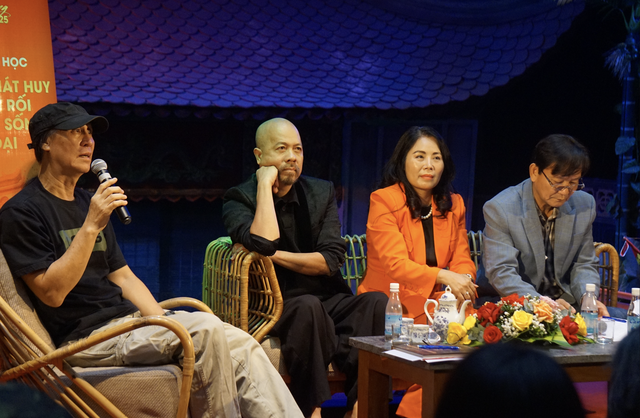
Vietnam’s water puppetry wins hearts abroad, loses them at home
For years, the Thang Long Water Puppet Theater in Hanoi has stood as a cultural phenomenon, Vietnam’s only theater performing 365 days a year, with nearly 10 shows daily and annual revenues reaching tens of billions of Vietnamese dong (VND1 billion = US$38,000), but 90 percent of its audiences are foreign visitors.
This paradox was at the heart of a seminar titled ‘Preserving and Promoting Puppetry in Contemporary Life,’ held at the theater on Monday.
At the event, experts, artists, cultural managers, and researchers voiced a painful question: Why does the world marvel at Vietnamese water puppetry, while so few Vietnamese seem to care?
Le Thi Anh Mai, deputy director of the Hanoi Department of Culture and Sports, noted that in 2023, the theater staged more than 1,600 performances for hundreds of thousands of viewers.
On average, six to eight shows were held daily, drawing over 1,000 spectators each day, most of them foreigners.
In 2024, the Thang Long Water Puppet Theater was honored with the Travellers’ Choice Award by a U.S. tourism organization, reflecting glowing reviews from international travelers.
The troupe has performed in over 40 countries and territories, and many foreign viewers have remarked, “You’ll never truly understand Vietnamese culture unless you’ve seen a water puppet show.”
While this global recognition brings pride, it also highlights a stark reality: only about 10 percent of Vietnamese audiences attend such performances, mostly school groups.
Parents might take their children once, but rarely return out of personal interest.
People’s Artist Trinh Thuy Mui, chairwoman of the Vietnam Theater Artists’ Association, admitted that those working in the art form share responsibility for this indifference.
She expressed hope that domestic audiences could eventually make up around 30 percent of the total.
She hinted at bringing puppetry to schools.
Local puppet troupes and theaters could hold special performances for students, nurturing future generations of Vietnamese spectators who see water puppetry not just as heritage but as living art.
Mai said that globalization and the rise of modern entertainment demand new thinking, professional organization, and innovative ways to connect traditional arts with today’s audiences.
Meritorious Artist Thanh Hien, director of the Thang Long Water Puppet Theater, acknowledged several obstacles facing the puppetry, including competition from modern entertainment, changing tastes of audience, and difficulties in retaining both artisans and spectators and preserving traditional performance spaces.
Urbanization has also taken its toll, narrowing traditional puppet guilds.
Also, funding to sustain these troupes is perennially tight.
People’s Artist Hoang Tuan, former director of the theater, recalled that Hanoi once had over 20 puppet guilds, but now, only a handful remain.
Many have lost their unique identities.
Meanwhile, academic research in traditional performing arts is declining.
The Hanoi Academy of Theater and Cinema has almost stopped training specialists in this field.

Speakers at a seminar on Vietnam’s water puppetry at the Thang Long Water Puppet Theater in Hanoi, November 10, 2025. Photo: Thien Dieu / Tuoi Tre
Former director of the theater and Meritorious Artist Le Van Ngo said that preservation should go beyond maintaining old repertoires, it must also safeguard the rural spaces that gave birth to water puppetry.
“We must return water puppetry to the rice fields,” he said.
“Vietnamese villages are disappearing, but we must keep the cultural environment alive for puppetry and for all traditional arts.”
Tieu Bac - Thien Dieu / Tuoi Tre News
Link nội dung: https://news.tuoitre.vn/vietnams-water-puppetry-wins-hearts-abroad-loses-them-at-home-103251111172534898.htm